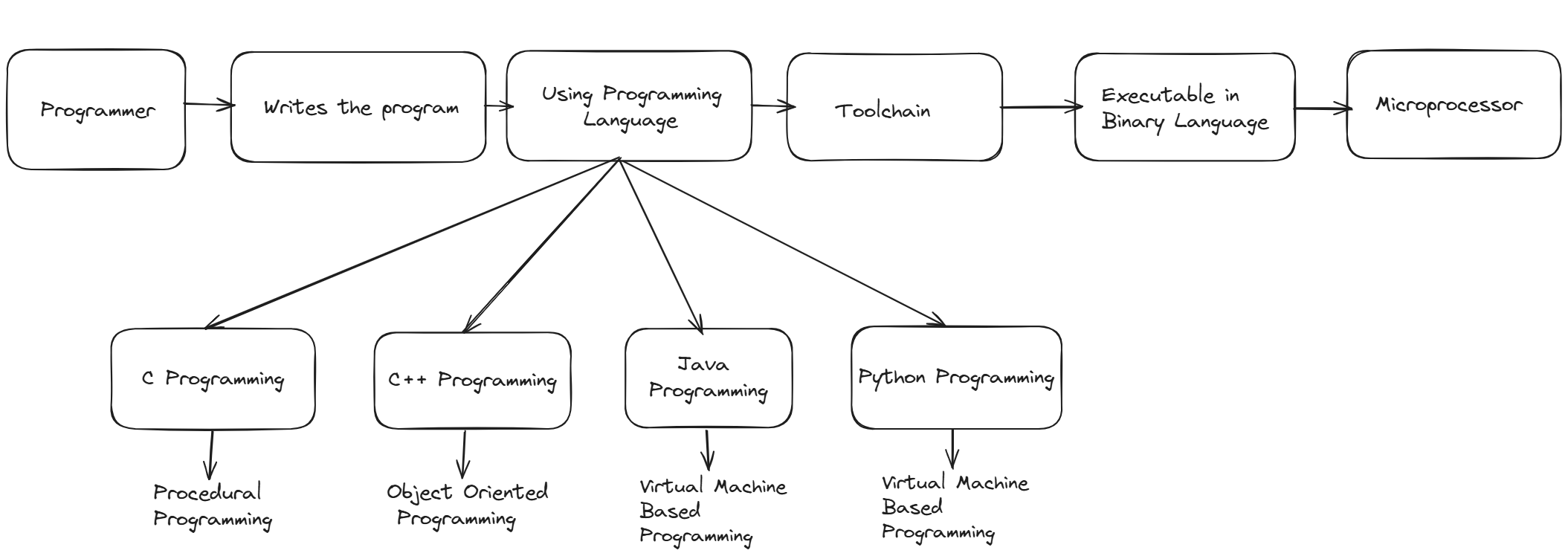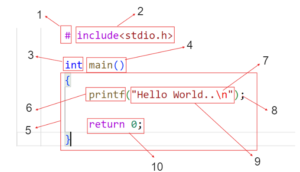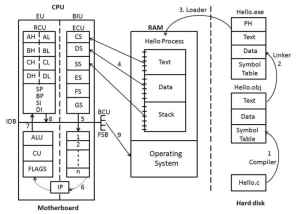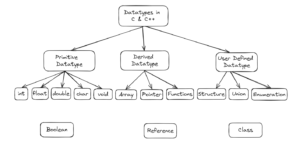Computer Programming Language and Toolchain Process
In this blog, we are going to discuss the concept of computer programming languages and the internal workings of applications.
Note:
As programmers, our task is to communicate with the computer.
- Inside the computer, the microprocessor is responsible for performing tasks.
- The microprocessor only understands binary language (1, 0).
- As programmers, it is not practical to write programs in binary language.
- To solve this problem, programmers learn different programming languages like C, C++, and Java.
- Programs written in any programming language get converted into binary language.
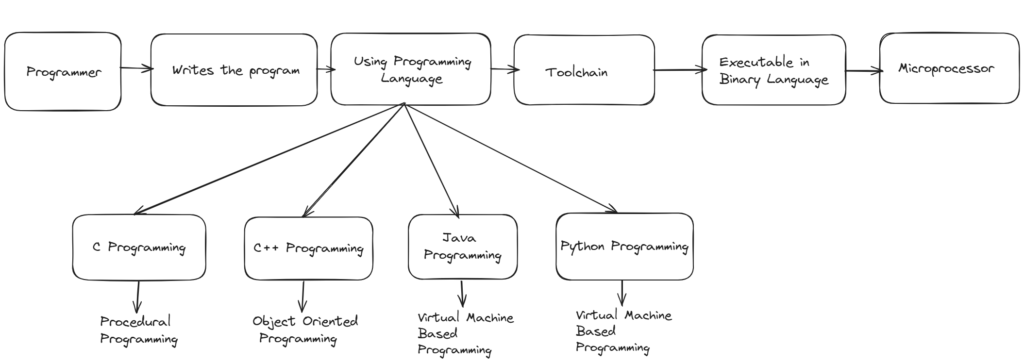
There are three types of programming languages:
- Procedural Programming Language (C Programming)
- Object-Oriented Programming Language (C++ Programming)
- Virtual Machine-Based Programming Language (Java, Python Programming)
- Programmers select a programming language based on the specific needs of their project.
- They write the program using the chosen language.
- The written program is forwarded to a toolchain.
- The toolchain converts the program from a human-readable format into a machine-readable format (binary).
- Each programming language has a different toolchain.
Toolchain of C Programming
The toolchain is a set of software tools used to convert a human-readable program into a machine-readable program.
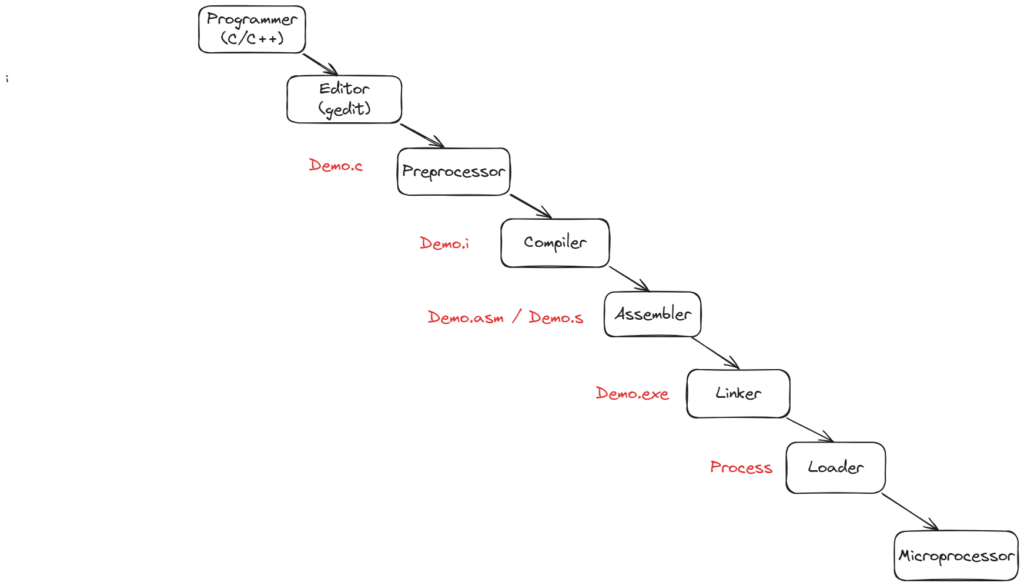
Step 1
- The programmer uses an editor to write the program.
- After writing, the file is saved on the hard disk with the name demo.c.
- The contents of demo.c are human-readable and human-understandable.
Step 2
- The preprocessor accepts the .c file as input and generates an expanded version of the .c file.
- The file created by the preprocessor is demo.i.
- .i stands for intermediate code.
- The contents of the demo.i file are human-readable and human-understandable.
Step 3
- The output of the preprocessor is provided as input to the compiler.
- The compiler is software that converts the program from one language to another.
- In our case, the compiler converts the program from a human-readable format into a machine-dependent format, which is assembly language.
- The file created by the compiler has the extension .asm or .s.
- The newly created file by the compiler is demo.asm.
Step 4
- The output of the compiler is passed as input to the assembler.
- The assembler is software used to convert the program from a machine-dependent format into a machine-understandable format.
- The output of the assembler is a file with the extension .obj.
- In our example, the newly created file is demo.obj.
- Demo.obj contains the code in binary format but is not directly executable.
Step 5
- The linker links the .obj file generated by the assembler with its dependent .obj files.
- The linker generates the output with the extension .exe.
- In our case, demo.exe is the output of the linker.
Step 6
- The .exe file generated by the linker is stored on the hard disk.
- To execute any application, it has to be loaded into RAM.
- The loader is responsible for loading the .exe file from the hard disk into RAM.
- After loading, the .exe file is considered a process and gets executed with the help of the operating system.
